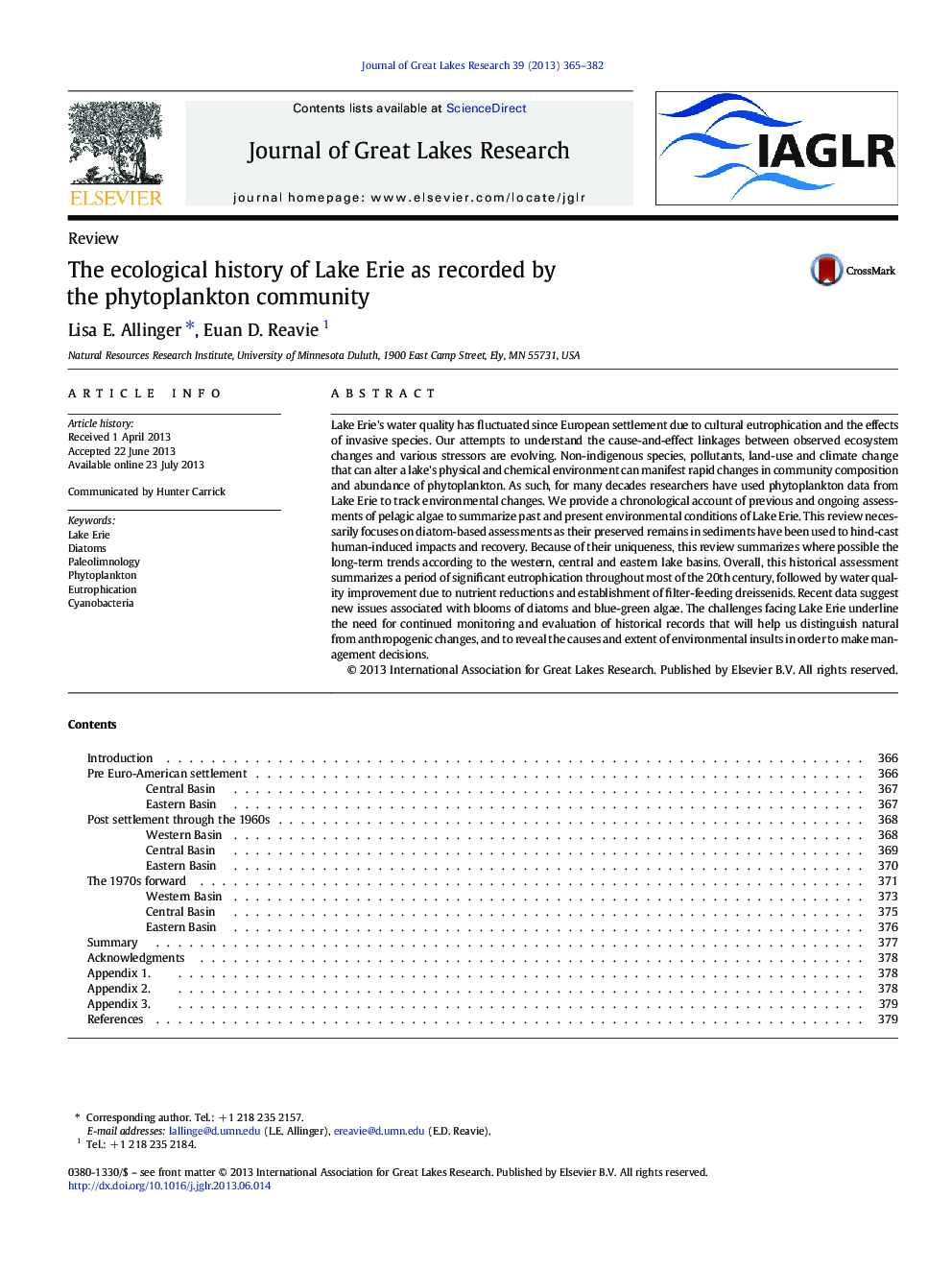| Article ID | Journal | Published Year | Pages | File Type |
|---|---|---|---|---|
| 4398571 | Journal of Great Lakes Research | 2013 | 18 Pages |
•Recent ecological shifts warrant a historical reevaluation of Lake Erie.•We review periods of ecological degradation/recovery in the history of Lake Erie.•Recent Lake Erie phytoplankton data indicate primary producer instability.•Challenges facing Lake Erie require continued monitoring and paleoecological data.
Lake Erie's water quality has fluctuated since European settlement due to cultural eutrophication and the effects of invasive species. Our attempts to understand the cause-and-effect linkages between observed ecosystem changes and various stressors are evolving. Non-indigenous species, pollutants, land-use and climate change that can alter a lake's physical and chemical environment can manifest rapid changes in community composition and abundance of phytoplankton. As such, for many decades researchers have used phytoplankton data from Lake Erie to track environmental changes. We provide a chronological account of previous and ongoing assessments of pelagic algae to summarize past and present environmental conditions of Lake Erie. This review necessarily focuses on diatom-based assessments as their preserved remains in sediments have been used to hind-cast human-induced impacts and recovery. Because of their uniqueness, this review summarizes where possible the long-term trends according to the western, central and eastern lake basins. Overall, this historical assessment summarizes a period of significant eutrophication throughout most of the 20th century, followed by water quality improvement due to nutrient reductions and establishment of filter-feeding dreissenids. Recent data suggest new issues associated with blooms of diatoms and blue-green algae. The challenges facing Lake Erie underline the need for continued monitoring and evaluation of historical records that will help us distinguish natural from anthropogenic changes, and to reveal the causes and extent of environmental insults in order to make management decisions.
